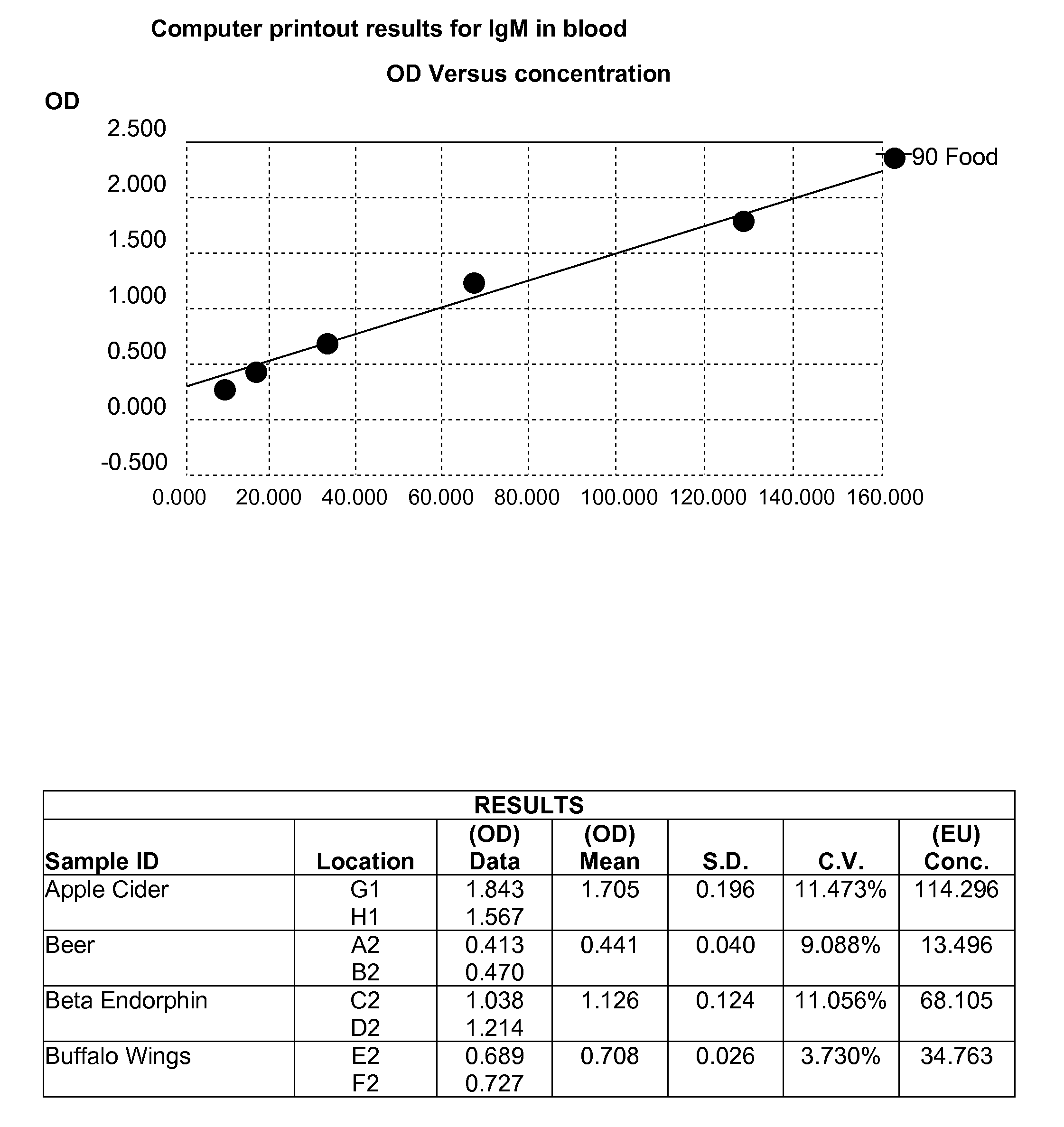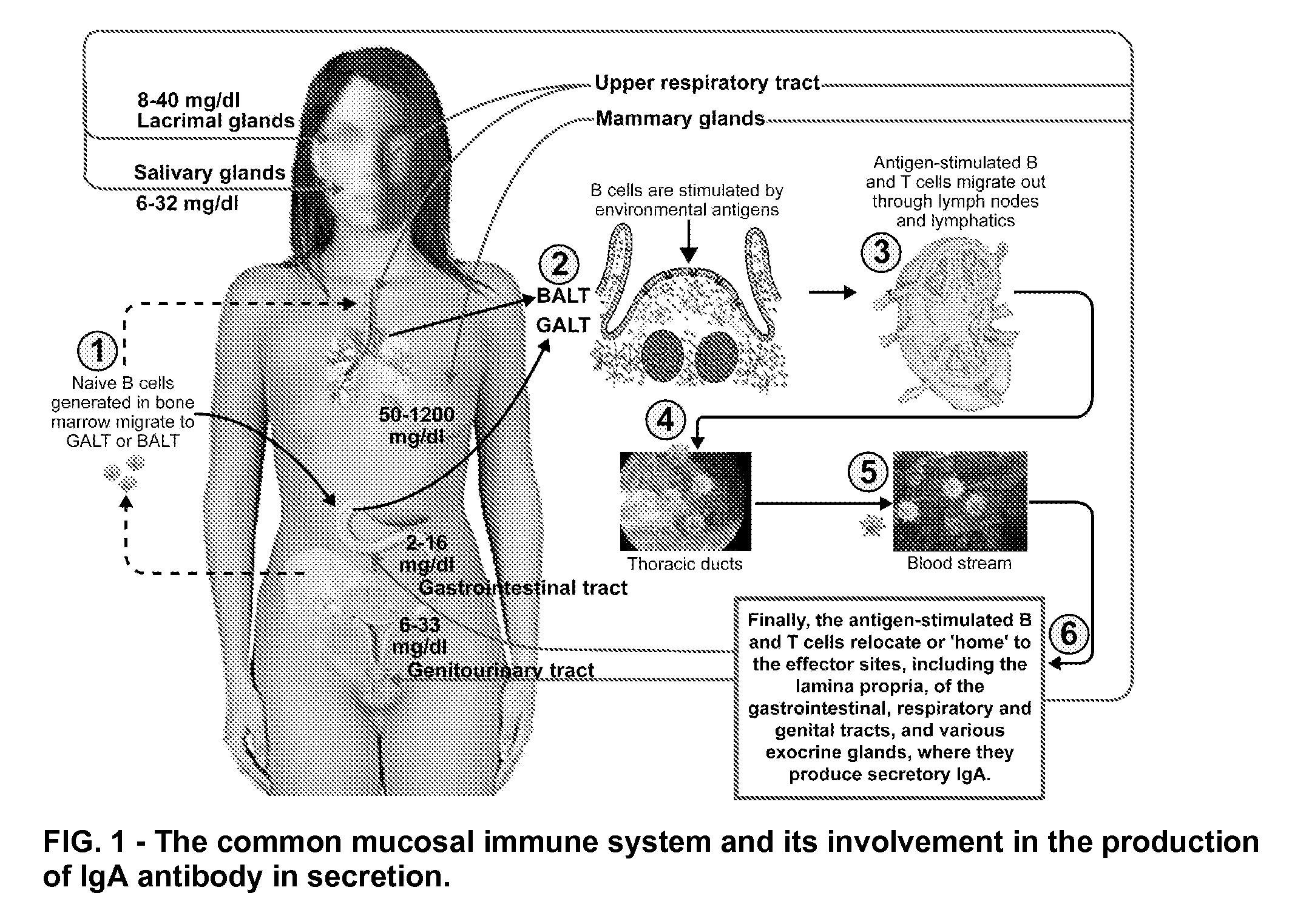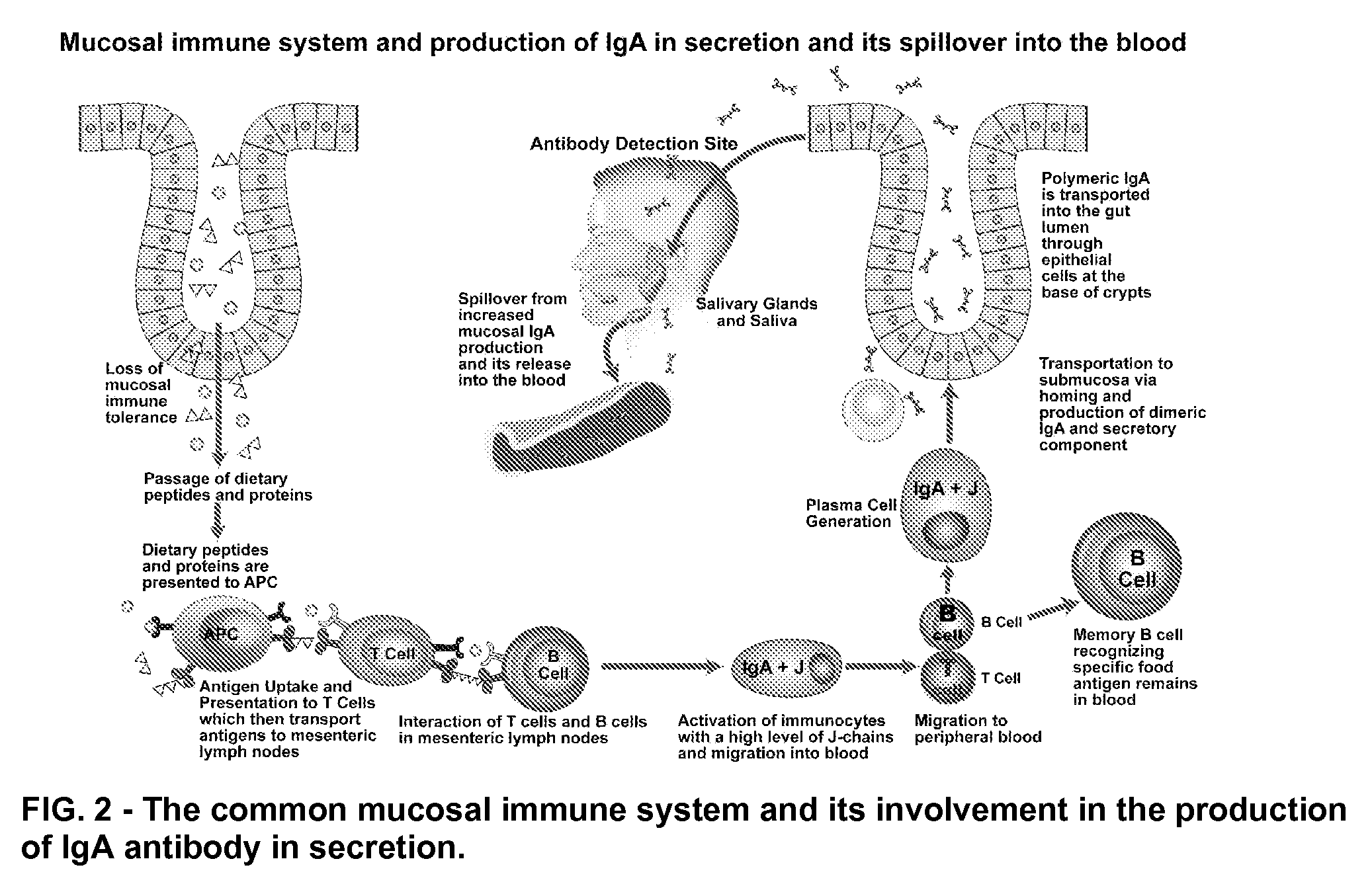Blood and saliva test for detection of delayed food allergy and intolerance against modified foods
a technology of which is applied in the field of immunoassay for delayed food allergy and intolerance against modified foods, can solve the problems of many clinicians' concerns, igm or iga in the blood, and miss the abnormal immune reaction to many food antigens, so as to improve the detection of delayed food sensitivities or intolerances
- Summary
- Abstract
- Description
- Claims
- Application Information
AI Technical Summary
Benefits of technology
Problems solved by technology
Method used
Image
Examples
example 1
Analytical Methods for Identification and Characterization of Modified Food Antigens or Allergens
[0080]The isolation of proteins and glycoproteins is a prerequisite for extraction of antigens deom modified foodstuffs. Each raw or processed food was ground at 4° C. using a food processor and extraction buffers and reagents, such as Coco buffer (0.55% NaHCO3, 1% NaCl), 0.1M phosphate buffer saline pH 7.4, 70% ethanol, and cold acetone.
[0081]Each food was mixed in different buffers and kept on the stirrer for 2 h at room temperature. After centrifugation at 2000 g for 15 minutes the liquid phase containing proteins, glycoproteins and lipoproteins were removed and dialysed against 0.01M PBS using dialysis bags with a cutoff of 6,000. Dialysis was repeated for three times in order to make sure that all non-antigenic materials are removed. After dialysis extracted antigens from the above conditions were combined, and protein concentrations were measured.
[0082]The separation of the differe...
example 2
Assay Procedure for Detection of IgA and IgM in Saliva and IgG, IgM or IgA in Blood Against Raw and Processed Food Antigens
[0085]Dietary proteins and peptides were dissolved in phosphate buffered saline (PBS) at a concentration of 1.0 mg / ml then diluted 1:100 in different buffers, including 0.1 M carbonate-bicarbonate buffer, pH 9.5, or phosphate buffer saline, pH 7.4. 50 μl or more were added to each well of a polystyrene flat-bottom ELISA plate. Plates were incubated overnight at 4° C. and then washed three times with 20 mM Tris-buffered saline (TBS) containing 0.05% Tween 20. After washing, the plates were coated with 1.5% BSA and 1.5% gelatin in TBS and then incubated for 2 hours at room temperature and then overnight at 4° C. After the overnight incubation, the BSA+gelatin was removed. Plates were washed three times with 20 mM Tris-buffered saline (TBS) containing 0.05% Tween 20, dried and stored at 4° C.
[0086]Quality control was performed by the addition of serum or saliva wit...
example 3
Test for Antibodies to Dietary Antigens
[0087]The immunoassay can use patient saliva or blood collected in a sterile tube. Serum and saliva can be stored frozen for up to six months at −40° C.
[0088]The purified antigens were prepared according to Example 1 and were immobilized by attachment to a solid surface, such as a microtiter plate. Defined above, the dietary antigens are derived from the following general groups: milk and milk products; eggs and egg products; meat and meat products; fish, mollusks, and crustaceans and their products; oils, fats, and their products; grains and grain products; pulses, seeds, kernels, nuts, and their products; vegetables and vegetable products; fruits and fruit products; sugar, sugar products, chocolate products, and confectionery; and spices and herbs. These foods in their raw or processed form are listed in Table #2.
[0089]Test tubes, microtiter plates, nitrocellulose paper or other matrices were coated with about 1-10 micrograms of food antigens...
PUM
 Login to View More
Login to View More Abstract
Description
Claims
Application Information
 Login to View More
Login to View More - R&D
- Intellectual Property
- Life Sciences
- Materials
- Tech Scout
- Unparalleled Data Quality
- Higher Quality Content
- 60% Fewer Hallucinations
Browse by: Latest US Patents, China's latest patents, Technical Efficacy Thesaurus, Application Domain, Technology Topic, Popular Technical Reports.
© 2025 PatSnap. All rights reserved.Legal|Privacy policy|Modern Slavery Act Transparency Statement|Sitemap|About US| Contact US: help@patsnap.com



